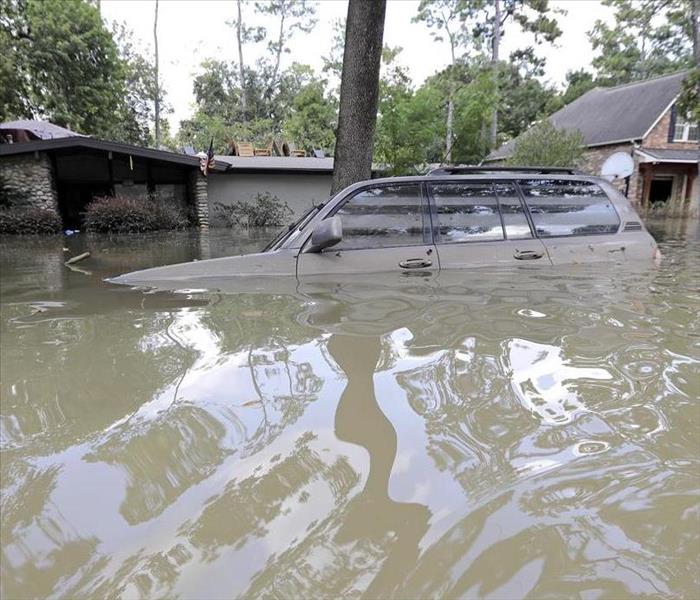Flood Warning!
8/9/2021 (Permalink)
With the tornado watch in effective, we also see that there is a flood warning in effective as well. Here are some details on floods and how we can prepare for them, and what to do after they take place.
Flood can happen anywhere, and without much of a notice. According to ready.gov “Just 6 inches of moving water can knock you down, and 1 foot of water can sweep your vehicle away.” Flood Watches and Flood Warnings are available to let you know what the weather is doing in your area. On average, more deaths occur due to flooding each year than from any other severe weather related hazard.
First of all flood watches and flood warnings are two separate alerts to warn about the weather in your area. A flood watch is to make you aware that conditions are possible for flooding. A flood warning means you need to take action to keep yourself and your family safe.
Ready.gov has some safety tips in case you are in an area where there is a flood warning.
- Move immediately to higher ground or stay on high ground.
- Evacuate if directed.
- Avoid walking or driving through flood waters. Turn Around, Don’t Drown! Just 6 inches of moving water can knock you down and 1 foot of water can sweep your vehicle away.
The water from a flood is only one of the risks. Water and electricity do not mix. In the event of a flood, downed power lines are also possible. Stay away from all power lines. Calling your local utility company is the only thing you should do in the event you see downed lines. Your appliances, if they get wet, should also not be used until they have been inspected by a licenses electrician. The fuse box in the house should be avoided as well as long as there is water in the home.
We may not be able to control weather conditions, but we can take all possible precautions to ensure our personal safety and protect our homes from severe damage. According to ready.gov the following tips can help prepare you for a flood:
- Find out how vulnerable your home is to flooding by determining the elevation of your property.
- Evaluate your insurance coverage once a year to make sure your home is fully covered. As new construction grows in certain areas, more flood-plains are sometimes created.
- If your home is in a flood-prone area, contact the National Flood Insurance program to learn what mitigation measures you can take in advance.
- Contact your local emergency management agency to learn how to construct proper protective measures around your home.
- If you live in a flood-prone area, keep these materials on hand: sandbags, plywood, lumber, plastic sheeting, trash bags, shovels, work boots and gloves.
- Purchase a weather radio. These special, battery-operated radios cost as little as $20 and are available at many hardware and appliance stores and other retail outlets.
- Put together a disaster survival kit. Keep the following supplies near at hand and put them in a water-tight container: flashlight with extra batteries, battery-powered radio and weather radio, first aid kit, medicines, eyeglasses, drinking water, non-perishable foods, change of clothes, cash and credit cards, and copies of all important papers.
- Plan two evacuation routes in advance. Don’t wait until threatening weather conditions occur before trying to determine your route to safety. Be aware of streams, drainage channels and low areas in your region that are prone to flooding, so that your evacuation routes are not cut off.
- Do not park your vehicle near streams or rivers, especially during threatening weather conditions.
SERVPRO of Arlington Heights/N. Prospect Heights wants you to stay safe first and foremost. However, flooding happens, and we are here to help. If you have flood damage in your home, call us at 847-637-3445 for all your water damage needs.






 24/7 Emergency Service
24/7 Emergency Service
